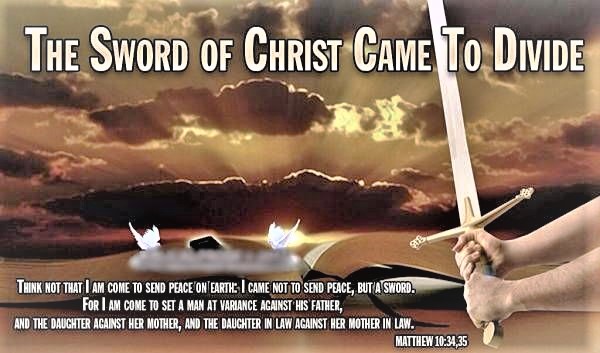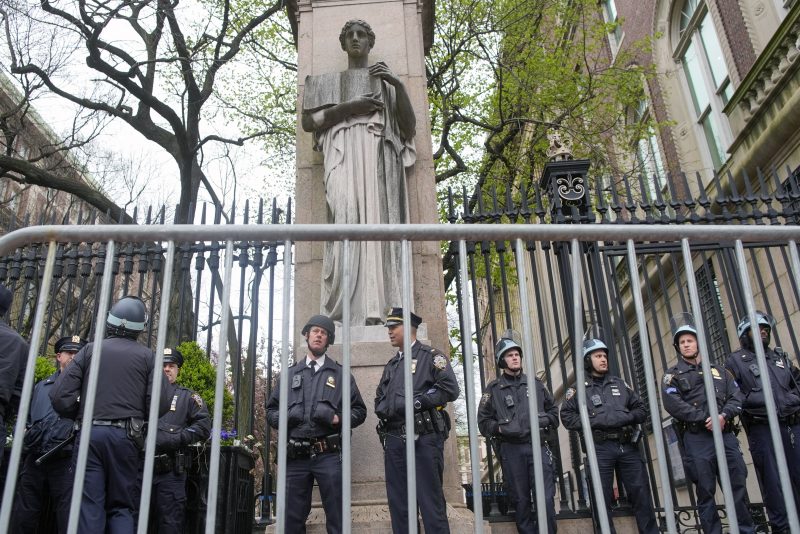By Patrick Buchanan
SEE: https://www.ammoland.com/2024/04/desantis-was-right-on-ukraine/; republished below in full, unedited, for informational, educational, & research purposes:

“While the U.S. has many vital national interests … becoming further entangled in a territorial dispute between Ukraine and Russia is not one of them.”
So Florida Gov. Ron DeSantis volunteered in response to a questionnaire that Fox News reporters posed to declared and potential Republican presidential candidates.
DeSantis defined what he saw as a truly imperiled U.S. “vital interest.”
“We cannot prioritize intervention in an escalating foreign war over the defense of our own homeland, especially as tens of thousands of Americans are dying every year from narcotics smuggled across our open border and our weapons arsenals critical for our own security are rapidly being depleted.”
Republican colleagues and potential rivals for the 2024 GOP presidential nomination came down on DeSantis with both feet, with Sen. Lindsey Graham reintroducing the “domino theory” of Vietnam days:
Vladimir Putin is “not going to stop. He’ll go to Moldova, into the country of Georgia, and he’s looking at the Baltic States or NATO. So the likelihood of a big war between America and Russia comes from letting him get away with destroying the Ukraine, because he’ll keep going.”
But, on reflection, is not DeSantis right?
Russia and Ukraine have each lost more than 100,000 dead and wounded in this war. Whatever its strategic objective in starting the war, Russia is now battling to hold onto territorial gains in Crimea, the Donbas, Kherson, and Zaporizhzhia, about a fifth of all Ukrainian national territory prior to 2014.
Both nations have testified, by the magnitude of their sacrifices, to their belief that what is at stake in the war is vital to them.
But what have we Americans sacrificed?
We have sent billions of dollars but squabbled over whether to send advanced artillery pieces, Abrams tanks and F-16s to the Ukrainians.
This hesitancy testifies to our true “vital interest” in this war. It is to stay out, and avoid being sucked in, as we have in previous wars, lest we get into a clash with Russia that could become World War III or a nuclear war.
By what we have done in Ukraine, and what we have refused to do, the U.S. and NATO testify to the stakes they truly see involved. And those interests are transparently not vital to the United States. How could they be?
In 1933, President Franklin D. Roosevelt first extended formal recognition to the USSR as Stalin was carrying out the genocidal Holodomor in which millions of Ukrainians perished from forced starvation.
If the genocide of the Ukrainian people did not constitute a U.S. vital interest, then when did whose flag, Russian or Ukrainian, flies over the Donbas or Crimea become a vital interest? It never was so considered during a 40-year Cold War.
What are we to make of Graham’s contention that Ukraine is the first bite of the apple for Putin, that Moldova, Georgia, and the Baltic republics, all three of which — Lithuania, Latvia and Estonia — have NATO war guarantees, are next on Putin’s menu?
But Putin has already invaded and defeated Georgia in the war over South Ossetia in 2008 — and then withdrew. For the Baltic republics, a Russian attack on any of them would risk retaliation and war with NATO.
Why should we think that Putin’s Russia, horribly bloodied in Ukraine, would be looking for a clash with a 30-nation NATO alliance led by the United States so Moscow could occupy an Estonia of 1 million people that Russia willingly gave up over three decades ago?
But Graham’s scenario of a Moscow on the march after a victory in southeastern Ukraine does raise questions about whether our present foreign policy, including NATO war guarantees, is truly protecting U.S. vital interests.
As stated, the transparent U.S. vital interest in the Ukraine war is to stay out of it and avoid the risk of a military clash with Russia that could lead to a wider war, a world war and a nuclear war.
The bottom line for both the USSR and U.S. in the Cold War was to avoid a hot war. And, for over four decades, Deo gratias, we succeeded.
Yet, since the Cold War ended, the U.S. has made NATO allies out of six Warsaw Pact nations and three Baltic nations that are former republics of the USSR. And Graham is talking about the U.S. confronting Moscow on behalf of three more — Ukraine, Moldova and Georgia.
Why?
When did these ex-Warsaw Pact countries and Soviet republics become nation-states whose independence and defense are U.S. “vital interests” worth guaranteeing at the risk of war with a nation with 6,000 nuclear weapons?
Recently, Turkey and Hungary gave their blessing to the admission of Finland to NATO. Finnish membership would obligate the U.S. to treat it as an attack upon our own country, a Russian incursion into Finland, which shares an 830-mile border with Russia.
Why should a Russian-Finnish border war, which has occurred before in history, automatically become a casus belli for the United States, 5,000 miles away?
Whom the gods would destroy, they first make mad.
Patrick J. Buchanan
Patrick J. Buchanan is the author of “Nixon’s White House Wars: The Battles That Made and Broke a President and Divided America Forever.”







